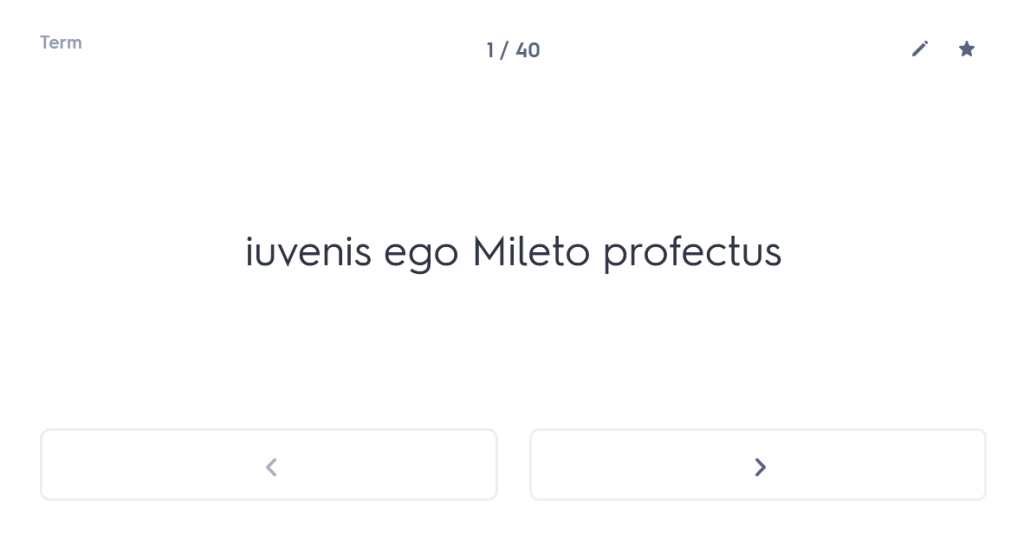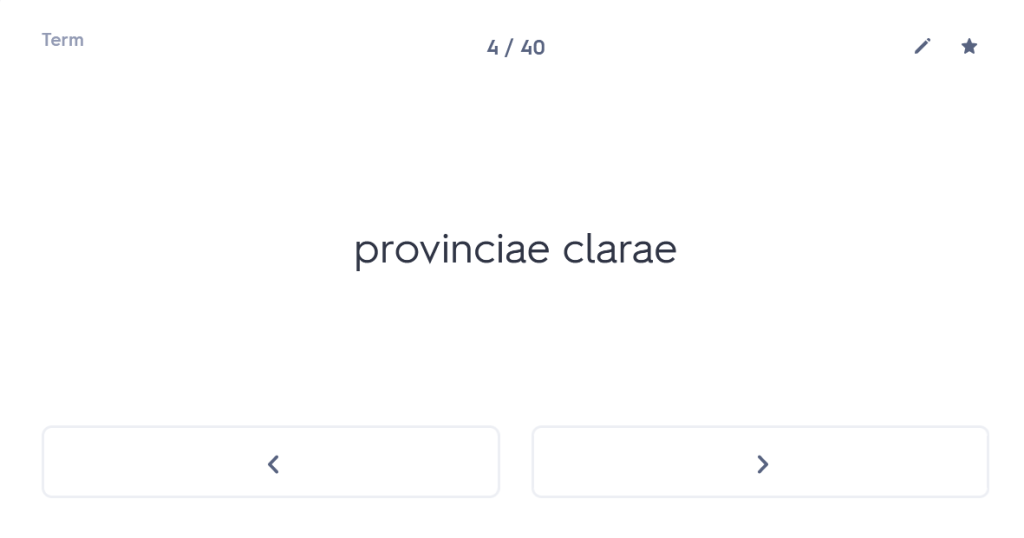Twice this week, working with two very different courses, I have been struck by an author’s decision to challenge students at a very early stage in their Latin with complex word-order.
“Traditional” Latin word order will have you believe that the subject (should there be one) will come at the beginning of the sentence and the verb at the end. Everything else, with a variety of rules within that, will come in the middle. Yet when it comes to studying real Latin literature, a student has to face up to the fact that this so-called tradition is – at best – a very simplified version of reality; if one were to be truly critical, one might say that the whole concept is a nonsense. Real Latin authors break away from the formalised shape of a Latin sentence – sometimes for effect, sometimes just because they felt like it.
With one small group of tutees I have just started the second booklet of Clarke’s Latin, an ab initio course aimed ostensibly at Common Entrance candidates, although you’d be hard-pushed to find a better introduction to Latin whatever your ultimate goal and indeed I am using it with an adult learner also. Students have been taught all of the cases and their meanings, but only in the 1st declension. Students have also been taught the endings of the present indicative active in the 1st conjugation, and we have just reached the point where the author has introduced the imperfect tense for the first time. Not surprisingly, things are starting to get a little trickier, but my students are rising magnificently to the task – a testament to the robustness of the course so far.
The author has challenged the students from the beginning when it comes to word order, forcing them to engage with both their verb endings and their case endings. But I was struck in particular by this sentence, in exercise 47:
poetas, ubi appropinquant, feminae agricolarum salutant.
Wow. Even the students were impressed.
After some discussion with my fearless group of three, they deciphered that poetas was accusative and therefore not the place to start. I then encouraged them to look at verb endings and to consider whether they could find a subject. With this relatively light-touch coaching, they were excited to deduce that the subject of the main clause was feminae and that the subordiate clause contained the subject in the verb ending but referred back to the poets. The genitive case gave them no trouble at all. With careful thought but relative ease, they came up with the perfect translation: the farmers’ wives greet the poets when they approach.
So far so unremarkable you might say – although personally, having taught Latin for 21 years, I think it is indeed remarkable the extent to which a robust course such as this one enables students to think like a true Latinist at this early stage. But what happened next was perhaps even more exciting. One of the group said, “why would an author put poetas at the beginning like that, instead of the subject?”
It then occurred to me that Clarke’s course is not only producing better results when it comes to the children’s understanding of the underlying grammatical principles; it is also preparing them for much more complex skills later down the line. Firstly, it is preparing them for literary criticism: why an author chooses to place a word in a particular place is exactly the kind of question that GCSE and A level candidates need to be able to answer in their study of literature. Furthermore, when Clarke uses challenging sentences such as these, he is opening children’s eyes to the challenge of translation at a higher level; as a result of this child’s question, we were able to discuss how a translator might attempt to render the sentence into a format that mimics the emphasis that is expressed in the Latin. I suggested something like “it is the poets that the farners’ wives are greeting, when they approach” and invited the children to critique my suggestion: does it stray too far from the original, or is it in fact more faithful to the text?
Clarke’s course offers some extraordinary opportunities for high-level thinking and dicusssion, even when students are at a very rudimentary level. These students have only met the 1st declension and the 1st conjugation in the present and the imperfect indicative active; beyond that, they’ve met a few adverbs and basic subordinate clauses using words such as ubi and antequam. Yet already they are asking questions that would not be out of place in an A level class. Already they are considering that word placement might be important or significant to a Latin author. Already they are pondering a variety of ways that the spirit of the Latin might rendered in translation, and beginning to realise that translation is not a simple or straightforward task in which you only follow a set of rules. This is, quite frankly, extraordinary.
On the very same day I had a session with a child whose school uses Suburani, a course which has gained popularity in many state schools. This course could not be more different from Clarke’s Latin and its authors are no doubt very happy about that – their philosophy is wildly different. The sentence that got me thinking was in chapter 8. By this point, students have met the present, imperfect and perfect indicative active. They have met only the nominative, accusative and ablative cases but they have seen them in three declensions, including neuter versions. Like with the Cambridge Latin Course, all three declensions and all five conjugations are used from the very beginning of the course due to the desire to create an interesting and varied storyline. Laudable as this might be, in my experience students who struggle with Latin have literally no idea what is going on by this stage.
My tutee was presented with the following sentence:
gentes Britannicas opprimunt Romani
It is not the only and not the first sentence where Suburani has used varied word order, and I like to think that this is a deliberate attempt on the part of the authors to encourage students to look at their verb and noun endings – just the same as Clarke’s course aims to do. However, this process is undermined in so many other ways by the course that my tutee was not able to parse the sentence above (which although it contains nouns and verbs from a wider variety of declensions and conjugations, is actually a good deal more simple than my example from Clarke’s Latin).
The translation that my tutee suggested came as no surprise: “the British tribes oppress the Romans”. This is due to a phenomenon I have written about before, the tendency for students to read from left to right, just as they have been trained to do in their own language. The trouble with Suburani is that it does nothing to break this habit. It might teach students their verb endings, but its constant and excessive use of pronouns in the nominative case encourages them to continue to read from left to right and guess the meaning of the sentence. It was this issue that I wrote about in my previous blog post criticising the course.
Now don’t get me wrong, the mistake made by my tutee is what I would expect any child to do; even my tutees using Clarke’s Latin have to be reminded on occasion not to read in this way – it’s a habit so deeply ingrained that it is nigh-on impossible to break. But students who have been taught using Suburani – when prompted to explain which noun is in the nominative or accusative case – usually find this really difficult. They have been shown too many declensions at once and as a result have found it bordering on impossible to memorise how the noun endings change as they decline. And they’ve only met three cases!
My issues with Suburani go beyond its grammatical faults – criticisms which could just as easily be aimed at the Cambridge Latin Course, for which I retain an undeniable fondness and used (albeit heavily adapted) throughout my career in classroom teaching. Suburani contains material presented in a manner that I consider to be quite frankly inappropriate for younger children, another thing I have written about before. Having reached chapter 8 and encountered a simplified version of Caesar’s account of the Druids’ wicker man, reproduced without critique and in graphic detail (with a nice firey background graphic to boot), I have to ask myself what on earth they thought they were doing. While the Cambridge Latin Course is currently undergoing a re-write and the team has agonised about how to present certain aspects of the ancient world faithfully yet sensitively, the authors at Suburani seem out to create shock and awe. I am disliking it more and more the further I get through it.



























